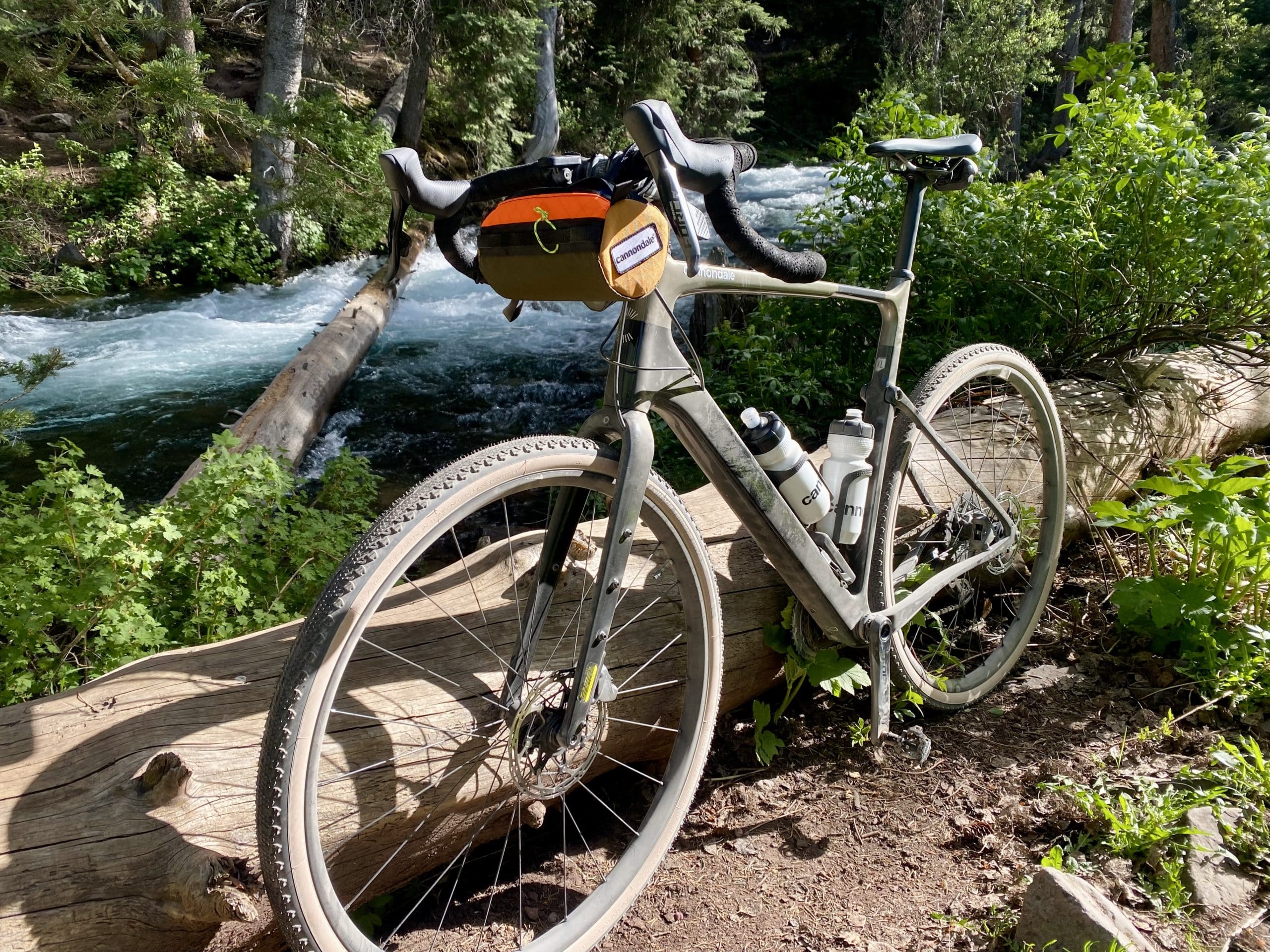I’VE RECENTLY COME TO THE CONCLUSION that I’m a dirtbag. This won’t come as a shock to anyone that knows me, but the revelation was eye opening for me because it’s become apparent that said dirtbaggery isn’t so much a choice as it is an integral part of my DNA. I don’t practice dirtbagerry, I am a dirtbag. I can’t help it. Here’s proof: I test and write about gear for a living. My garage is full of state-of-the-art equipment. But I went paddling yesterday and, instead of grabbing one of my dry bags, I stuffed my license and some cash into a Ziploc baggie. It wasn’t a Ziploc brand baggie. It was some off brand plastic baggie. Because I’m a dirtbag. Need more proof? Examine my predilection for underbiking.
What’s underbiking? I’m glad you asked. Underbiking is basically riding more technical terrain than your given bike is suited to handle. It’s exactly like regular biking, only with insufficient equipment. Riding gravel roads on a skinny-tired road bike. Riding rooty singletrack on a gravel bike…I had a neighbor who prided himself on riding Pisgah’s infamously gnarly singletrack on a homemade rigid mountain bike. He was a classic underbiker. If you’ve ever gotten to the end of a rocky descent on your full suspension mountain bike and thought, “That was fun, but I bet it would be more fun if every rock on the trail tried to murder me!” then you too might be an underbiker.
The thing about underbiking is that it goes against the very grain of the bike industry, nay, the gear industry as a whole. There is a very powerful and well-funded machine that drives outdoor gear innovation, delivering ever-better equipment that is beautifully suited to specific terrain. Bikes with 160 inches of travel that soak up water bar drops. 120-mm wide skis that float in and out of knee-deep powder. Running shoes with carbon inserts that make you feel like you’re skipping on a trampoline. This machine of innovation is why you aren’t satisfied with just one bike. You need a dirt jumper and a road bike and a gravel bike and a bike that can handle techy singletrack and another that shines on fast flowy trails. That big bike over there? That bike is designed specifically for pointing downhill. Do not try to pedal that bike uphill. It will explode.
I’m a sucker for these innovations and I love to see what great gear will allow me to do; I’m a better mountain biker when I’m riding my full-squish, plus-sized tire bike with a dropper post. There’s no doubt you can buy a better game, no matter what sport you’re playing, because the best gear out there is designed to do half the work for you. But there’s a luddite sensibility to underbiking that I’m also naturally drawn to.
Scaling back your gear makes even the most mundane terrain feel treacherous. One of the most thrilling and memorable descents I ever accomplished was an accidental underbiking mission. My buddy and I were on a road ride and decided to take a gravel road shortcut. We thought it would be 200 yards of mellow gravel. It ended up being a two-mile steep gravel descent with chunky rocks and waves of washboard. I thought I was gonna crack the bike frame, or at the very least, taco a rim in the washboard. But we survived. It was exhilarating. And I’ve been chasing that sensation ever since.
More recently, I almost went over the handlebars trying to navigate a tangle of slick roots on my gravel bike. If I were on my mountain bike, with its nearly 3-inch-wide tires, I wouldn’t have given the roots a second thought. But on those skinny gravel tires I was completely puckered, and for a moment I thought about dismounting and walking through the sketchy bits. But then I remembered that almost dying on a bike is fun and pedaled through it.
The joy of underbiking isn’t just relegated to bikes. Using Tenkara rods to fly fish delivers a similar underbiking aesthetic. Tenkara rods have no reel—there’s just a fixed, 12-foot-long line on the end of a rod. Casting them is similar to casting a reeled fly rod, but hauling in a fish takes a lot more forethought and dexterity. You can do it, but it’s going to be an exciting battle that pits man versus fish and turns you into a contortionist.
During the winter I take great joy in strapping on my super light cross-country ski gear and climbing up the outer edge of the tiny mountain just outside of town and then pointing those skinny ass skis downhill and doing my best to stay upright. I fall a lot. I look ridiculous. But sometimes I can link a handful of shaky tele turns together and I imagine it’s what walking on the moon feels like. Like I’m doing something that shouldn’t be possible. Like I’m getting away with something. Because those skis, with no edges and soft boots without fixed bindings, were not made for going downhill. And yet, here I am, going downhill.
It’s impossible not to smile when underbiking goes well. I believe this to be the guiding principle of mountain biking, when the first pioneers of the sport looked at their cruisers, glanced at the mountain trails surrounding them and said, “You know what would be cool?” Of course, you can get carried away with underbiking. Fortunately, it’s easy to know when you’ve taken underbiking too far because you’re bleeding.
But finding that line between wide-grinned delight and blistering pain is the whole point of the endeavor, and why underbiking is more of an art form than skill. Something that can be practiced, but never perfected. Long live riding sketchy trails on insufficient equipment, and the pure joy it delivers.







